A field incomprehensible to the untrained eye, but omnipresent in consumer electronics, SoCs - for system on a chip - refer to the mobile chips integrated into our smartphones, tablets and connected watches. Embark with us on our journey to the heart of SoCs - also known as mobile processors - to discover who they are and what they are used for in the heart of our smartphones.

File updated in August 2018
If you don't know anything about it, but you're curious: so much the better! This file aims to make you discover what is hidden inside your smartphone. If you're already a connoisseur of the world of SoCs, mobile chips, a little booster never hurts, especially in this ever-changing world.
What is an SoC?
In a “classic” computer such as a desktop PC, things are quite simple. The processor (CPU) is responsible for carrying out the most widespread calculations, those which allow for example to run the operating system or a web browser. We also find the graphics card (or GPU) which is responsible for displaying an image, whether in 2D or in 3D as in games. The motherboard plays the role of conductor by connecting all the components together, like the CPU, GPU, but also RAM and other small chips.
But since the start of the smartphone era, we have seen the emergence of all-in-one systems. Thereby, almost all the content of a computer ends up in a single chip on the smartphone: the SoC. The components are then much more interconnected, for example with a processor frequency which varies as a function of the frequency of the graphics card due to thermal and consumption constraints. A completely new method compared to a traditional computer where each component was more or less independent.
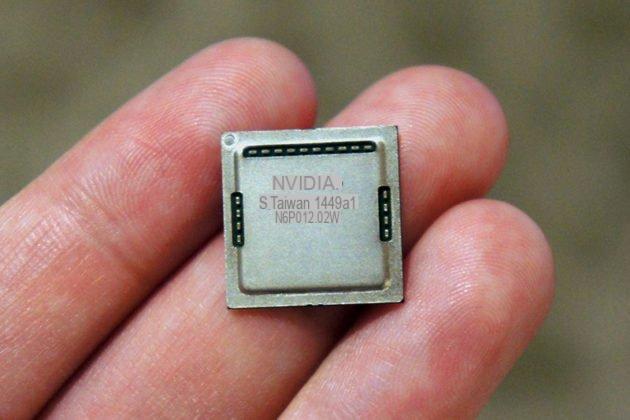
An nvidia Tegra X1 SoC
The new engraving processes (the current ones are engraved in 10 nm for example, when the next generation will be in 7 nm) have made it possible to significantly reduce the size of the components. So today we have the power of a computer from just a few years ago in your pocket. However, this was done at the cost of increasing complexity which makes the field of SoCs difficult to understand for anyone.
Difference between processor and SoC
We often speak by abuse of processor language when we have to talk about the heart of a new smartphone or during a hardware announcement from a manufacturer. Yet beyond the “simple” role of the processor it integrates, the SoC includes a whole gallery of components. We can compare the processor to the conductor, while the SoC would represent the entire orchestra, comprising wind instruments, strings and percussion.
The different components of the SoC have the task of fulfilling various functions, like a PC, but miniaturized to the extreme. If the processor thus represents an essential element, the SoC also includes all the other components allowing to operate a smartphone, a tablet or a connected watch.
Within current smartphones we can find a wide variety of SoCs, including:
- Exynos 9810 chez Samsung
- A11 at Apple
- Snapdragon 845 at Qualcomm
- Helio chez MediaTek
- Kirin 970 at HiSilicon (a subsidiary of Huawei)
We could also cite the Tegra from Nvidia, even if these do not really target smartphones, or the Allwiner and Rockchip, present in a large number of devices sold in China. There are many, many SoC manufacturers, so this list is not meant to be exhaustive.
What's inside an SoC
The SoC, as we said, is like a miniaturized PC in the extreme. It therefore includes components and controllers allowing it to manage all the equipment on your smartphone, whether it is the camera, internal memory, or even the modem.
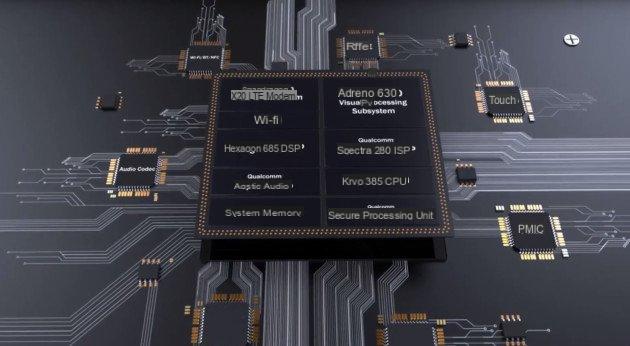
Snapdragon 845 architecture
Processor (CPU)
Within an SoC, there is of course a processor. The processor (or CPU) within an SoC plays the same role as on a PC. However, with one important difference.
A “classic” processor will seek to perform the task entrusted to it by aiming for the highest possible performance without worrying about energy consumption. The processor of an SoC works against this principle and manufacturers seek above all to make it as efficient (energy efficient) as possible in all its tasks. The goal is that it uses as little energy as possible. But also that the energy it uses, coming from the battery, is best used, in order to make it profitable. This principle also applies to laptops, in which one can find mobile processors or SoCs.
To achieve good performance while sparing the consumption of a processor, it is possible to play on several factors. The frequency processor, the type of heart within the processor, as well as the engraving process.
Frequency (MHz)
La operating frequency is an important factor in the consumption of a processor, but lowering it too much has serious consequences on its performance. Chips are currently available with an operating frequency of approximately 1,3 to 3 GHz.
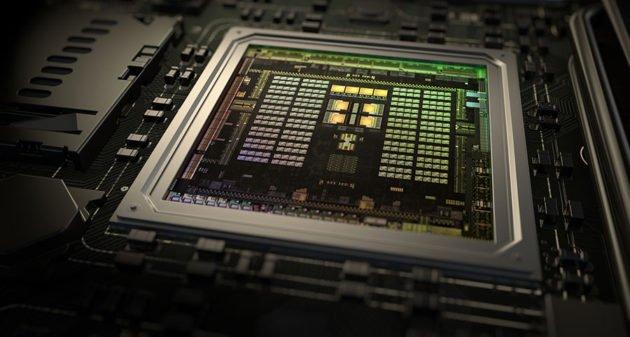
In yellow, the eight CPU cores
Hearts
Le type of hearts within the processor also has its role to play. So a heart Cortex-A53 consumes much less than a Cortex-A72 heart, but does not provide the same level of performance at all. If the first is specially designed to consume extremely little energy, the second is more focused on performance, but consumes much more.
It is for this reason that the Cortex-A53 are often used by four or eight, while the Cortex-A72 is more often used by two or four cores. We often find hybrid configurations using high performance cores for heavy tasks (such as 3D games) in combination with very low consumption cores (for retrieving emails for example).
Engraving
In end of new engraving processes are also a crucial factor in the field of SoCs to deliver good performance with low power consumption. It makes it possible to obtain an improvement in performance (by increasing the number of transistors) while limiting the increase in the size of the chip as well as its power consumption.
Thus, the change from 28 nanometers to 16 nanometers etching and the use of new Cortex-A72 cores instead of Cortex-A15s makes it possible touse 75% less energy for the same tasks, as shown below by ARM.
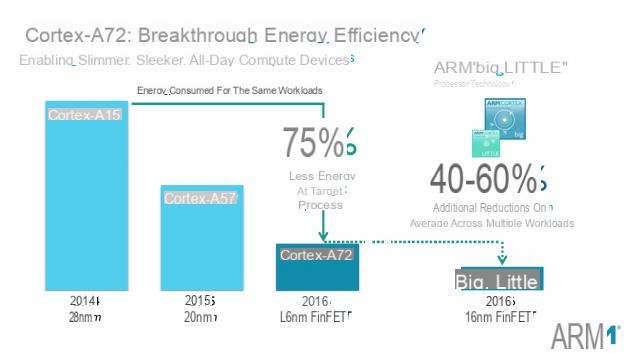
Android vs iOS
The impact of a powerful processor will be noticed in the general fluidity of the smartphone, for example the responsiveness of it when an application is launched. In this little game, Apple is a leader since the manufacturer only markets very few devices (iPhone, iPad and iWatch). So it is him possible to optimize in an extremely thorough way iOS depending on the processor used and to benefit from an extremely favorable consumption-performance ratio.
Public chat Android is much more complicated, since each phone is different, both in terms of hardware and software. Thus, Google must take into account a very wide variety of configurations in the Android ecosystem. There are indeed dozens of different processors, thousands of different smartphones and almost as many versions of Android customized with manufacturer interfaces.
This diversity, which is one of the strengths of the Android ecosystem, can also backfire. This can indeed lead to less than optimal performance on certain models or even certain applications that simply do not work on certain smartphones.
It is one of the reasons for which the processors used in the SoCs of Android smartphones are usually clocked at higher frequencies and have more cores compared to an iPhone, failing to be able to achieve the same level of optimization as at Apple.
Graphics chip (GPU)
Perhaps something familiar to PC gamers is the graphics chip or GPU. Although on a different scale within a smartphone, the GPU basically performs the same tasks as on a PC. Its role is to calculate 2D or 3D images then displayed on the screen via the pixels of the panel.
Regarding the calculation of 2D images, it takes place constantly since, very concretely, GPU is activated as soon as it is necessary to display a Web page, navigate in Google Maps, or display a video, that is to say, almost constantly, but at different levels on a recent smartphone.

On this subject, you have surely already tried: a video that is not playing or very jerky on one smartphone, and is completely fluid on another. This is a very concrete consequence of the improvement of GPUs, in particular on videos in 4K or in new encoding formats, such as H.265, which are increasingly supported. Indeed, although the CPU is very powerful, it is not suitable for this kind of tasks, and it is therefore a question of using the But by the full GPU acceleration tech (and its different units) in order to decode in a much more efficient & economical in playing videos.
Among the notable graphics chips, we can cite:
- Mali G72 d’ARM
- Qualcomm Adreno 630
- Architecture Rogue de PowerVR
Finally, the graphics API Volcano on SoC GPUs is very good news. This API brings the possibility of realizing 3D applications such as games or on a multiplatform between PC & Android. It is a particularly interesting period ahead. This technology should make work easier for developers, as well as better for users. In the longer term, this should have the consequence of making it possible to pushing the limits of mobile gaming.
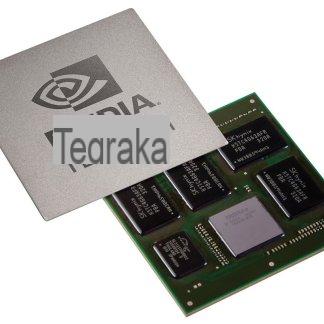 GPUs, graphics chips: who are they and what are they used for?
GPUs, graphics chips: who are they and what are they used for?


In gray (bottom) the CPU / GPU pair, in black (large rectangles) the RAM chips and in black (small rectangle) a NAND flash ROM Coming from the PC world, I am used to meeting ...


























